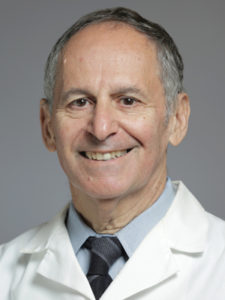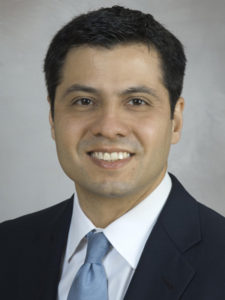
Big data continues to change how research takes place. It also has changed how attendees interact with all of the abstracts presented during the Annual Meeting.
Annual Meeting Planning Committee (AMPC) member David Pisetsky, MD, PhD, Duke University Medical Center, Durham, NC, said that the availability of computing power means abstracts include more data, so each abstract can be more extensive. That’s a positive, Dr. Pisetsky said, because attendees can better evaluate an abstract’s findings thanks to all the available information.
“You see this phenomenon in print journals, you can see it in abstracts, and you’ll see it in the poster presentations,” said Dr. Pisetsky, who served as subchair for Basic Science Abstract Selection. “The amount of information that can be conveyed in an abstract now contains tens and hundreds of times more pieces of data. It doesn’t mean the conclusions are 100 times more complicated, it’s just that there are tens and hundreds of times more data out there. Studies that used to involve 50 or 100 people now can involve 5,000 people.”
AMPC member Shervin Assassi, MD, University of Texas Health Science, Houston, TX, said that the quality of research in this year’s more than 3,700 submissions was incredibly high. Dr. Assassi, who served as subchair for Basic Science Abstract Selection, also said that trends in recent years have shown more of a blending of basic science and clinical science in the abstracts.

“More investigators are bridging the gap between basic science and clinical research by conducting more clinically relevant basic science or conducting clinical research that includes the most recent findings from basic science,” Dr. Assassi said. “I think it’s very obvious that the blending of basic science and clinical research is taking place, to an impressive degree in several areas such as biomarker development, identification of therapeutic targets, or even understanding the preclinical disease state.”
Annual Meeting plenary sessions offer a fantastic selection of clinical or basic science-based research that could change current practice or research paradigms. Concurrent sessions focus more on cutting-edge disease or topic-specific studies. Poster sessions are less formal and offer better opportunities for back-and-forth discussions in smaller groups or sometimes one on one.
AMPC members share these tips to get the most out of the abstracts:
- Planning matters: Reflect on professional goals for the meeting. Figuring out what you want to learn and whom you want to meet first makes building a personal schedule easer.
- Use the app: Download the official Annual Meeting App before coming to Chicago, and use it to discover specific abstracts and sessions in the areas that matter most to you. “That is a really excellent tool to manage and plan the meeting, which we didn’t have when we were fellows,” Dr. Assassi said. “We had a giant program book in our hands and had to go through the book without a search function to look for certain abstract.”
- Don’t be shy: Poster presenters, especially, want to talk about their work. Plenary and concurrent sessions may have limited time at the end of a session, and you might be competing with many others for time with the presenters. Alternatively, use poster sessions as a chance to connect with others in your interest area.
- Bonus tip: Presenters, perfect your “elevator pitch”: With hundreds of poster presentations taking place at once, the large poster hall can be a bit of a competitive space, Dr. Pisetsky said. Presenters need to be ready to engage quickly and succinctly when an audience appears at their poster wanting to hear from the presenter. “Presenters have to do their homework themselves to figure out, ‘Okay, what’s the message?’” Dr. Pisetsky said. “If I’m a presenter, I want to communicate as quickly as possible, as powerfully as possible, because I know my audience may want to move on.”
